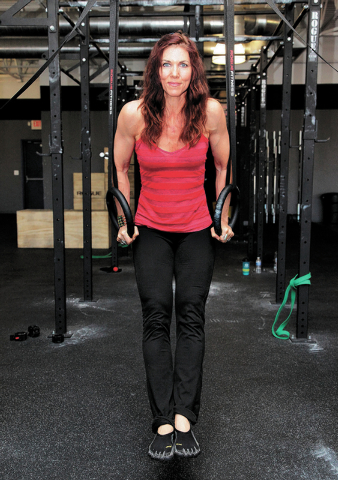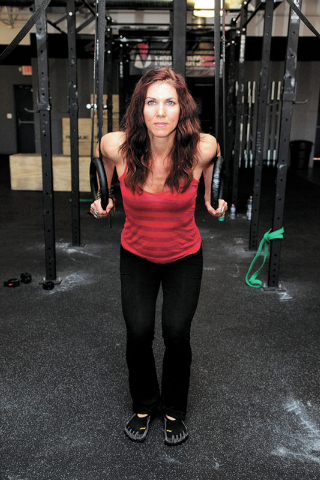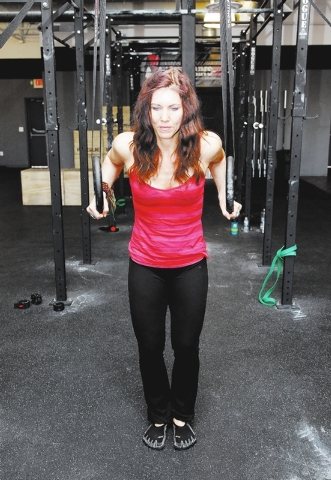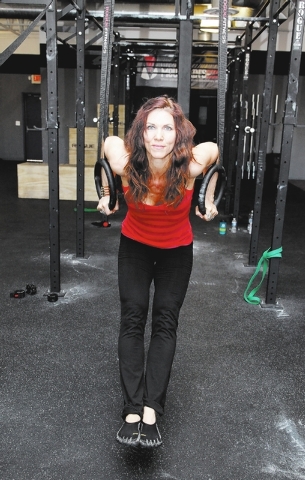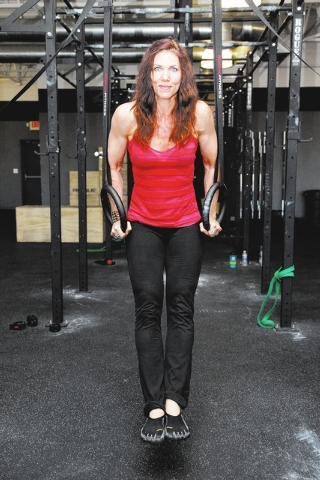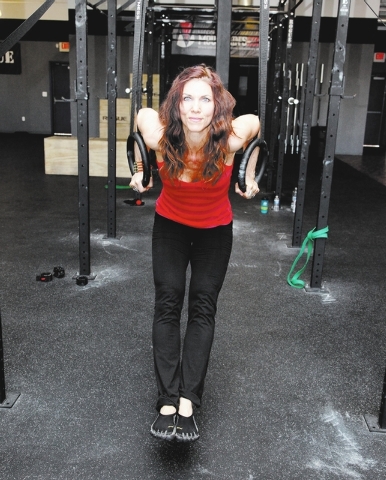For stronger arms and shoulders, take a few dips
The ability to lift one’s own body weight opens up a world of possibilities. Dips are one of the most effective body weight exercises. They are also a transferable gymnastic movement.
In the same way that body weight squats are good for building lower-body strength and movement mechanics, dips are just as beneficial to the upper body. Things such as range of motion, stable shoulder position and a tight core are practiced and improved by doing dips.
The prerequisite for doing dips is the ability to perform five to 10 traditional pushups. If you can’t lift a fraction of your body, it would be unwise to try to lift your whole body as it hangs suspended from parallel bars or gymnastic rings. Remember to earn your progressions.
Most gyms will have a parallel bar set up somewhere. It may be a stand-alone piece of equipment or attached to a universal pullup/dip/roman-chair piece. Gymnastic rings are less common in gyms, but some may have them hanging around.
Parallel bars allow for an easier movement. Because the bars are stationary, the body doesn’t have to work as hard to maintain a good position. The rings are far less stable. You need to create external rotation of the shoulder joint and maintain constant core contraction just to begin. Otherwise, the rings will migrate away from the body making it even harder to perform today’s movement.
Dips work predominately the chest and triceps. But there are many positive externalities that you gain by becoming proficient at the dip. The first is core activation. Hollow body is a transferable core posture you will see in most gymnastics, the dip among them. See my earlier column on the hollow body for details. You can see a hollow body in a dip by the athlete’s legs being straight and the feet slightly in front of the hip. The spine will be straight.
Another benefit is the ability to create and maintain active and stable shoulders. By holding the elbows close to the body, you create external rotation of the shoulder joint. This is a stable and safe position for your shoulder. This stable shoulder is also found in movements such as the chest press, overhead press, pullup, pushup and even your accessory exercises such as biceps curls and triceps extensions. If you’re a real ninja, you will have a stable shoulder in a barbell squat, too. Yes, you can find it there.
The concept of the vertical forearm is another gem to add to your collection. If you can maintain a vertical forearm during this movement then you’re moving efficiently. By allowing the lower arm to migrate backward or forward from its efficient vertical position, you are losing power created by your muscles. It can also put unnecessary torque on the elbows or wrists. If dips have been a source of pain in the past, try them with vertical forearms and elbows close to the body and see if the pain is still there. It is amazing how one or two little form fixes can make the difference.
Sometimes at your gym you might spot a guy with impressively large arms doing dips with added weights hanging from a heavy leather belt. But dips aren’t only for the strongest of lifters. Women can benefit from the dip, too. Generally, women who can perform dips have toned, not bulky, arms and shoulders. To avoid amassing a bulky upper body, stick with body weight and tempo dip variations. You can be strong without being bulky.
If you are not quite strong enough to perform an unassisted dip, try today’s modification on the dip. You can still gain the benefits with being able to do the traditional dip. As your strength improves, try the unassisted ones.
Chris Huth is a Las Vegas trainer. He can be reached at 702trainer@gmail.com. If you are a Las Vegas trainer and want to share your love of fitness as a guest coach, please contact him. Consult your physician before beginning any exercise program.



